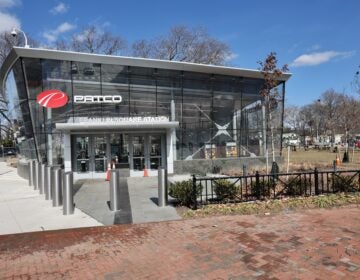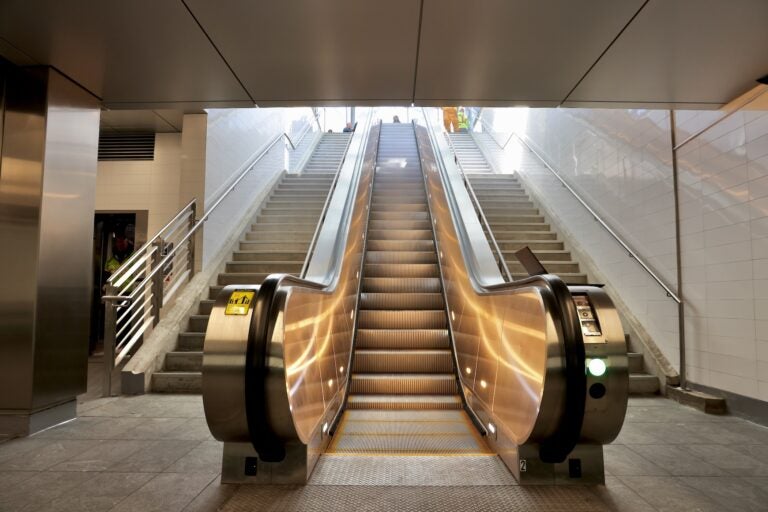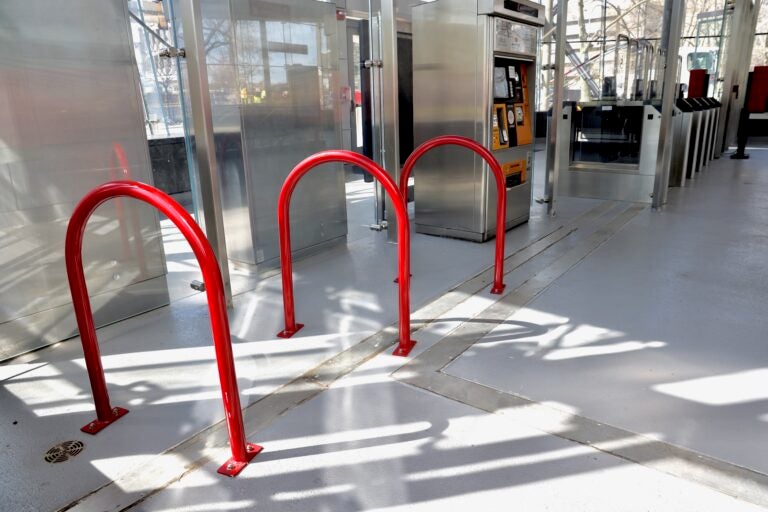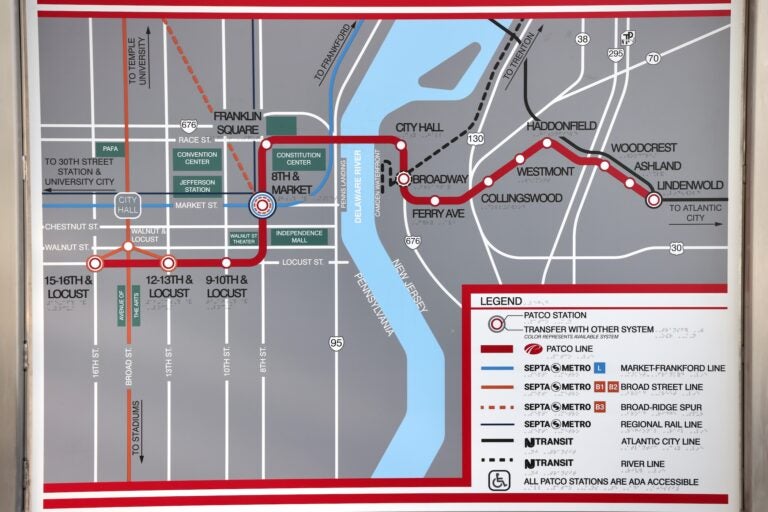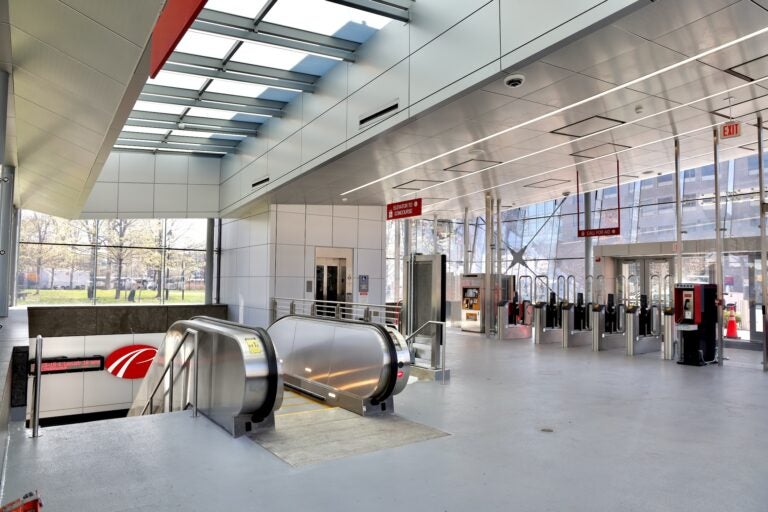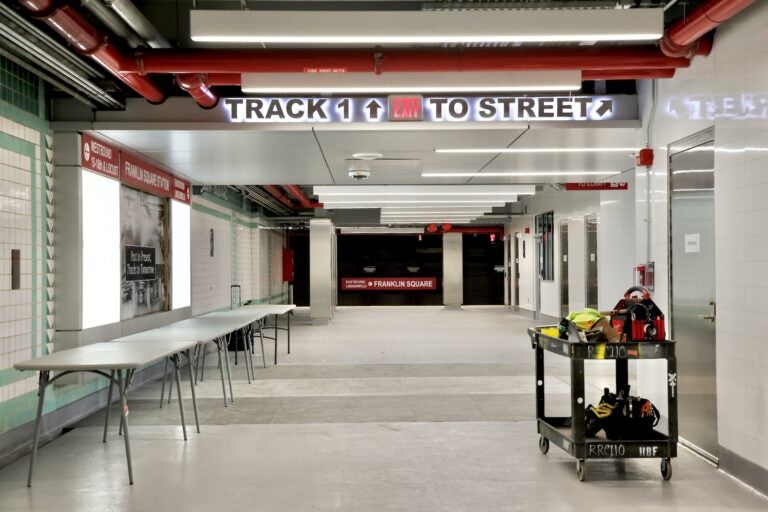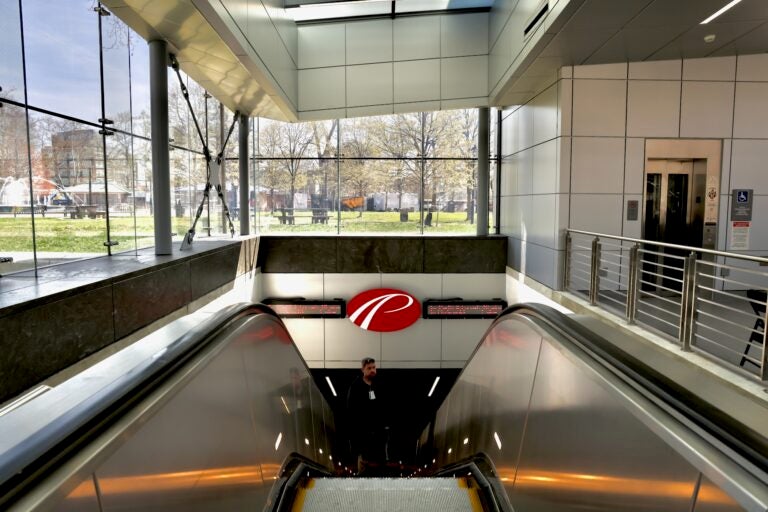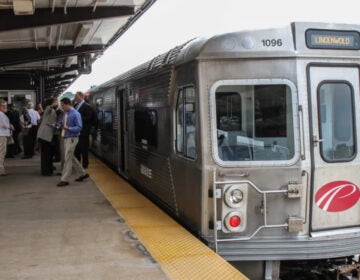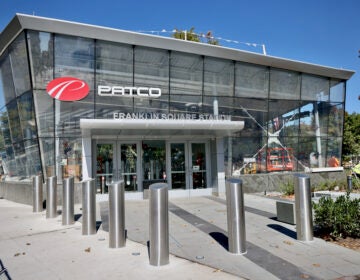Raising the dead: PATCO Franklin Square ghost station reopens after 46 years
The train station beneath Franklin Square park has been closed since 1979. A $29.3 million renovation wakes it up to a new neighborhood.
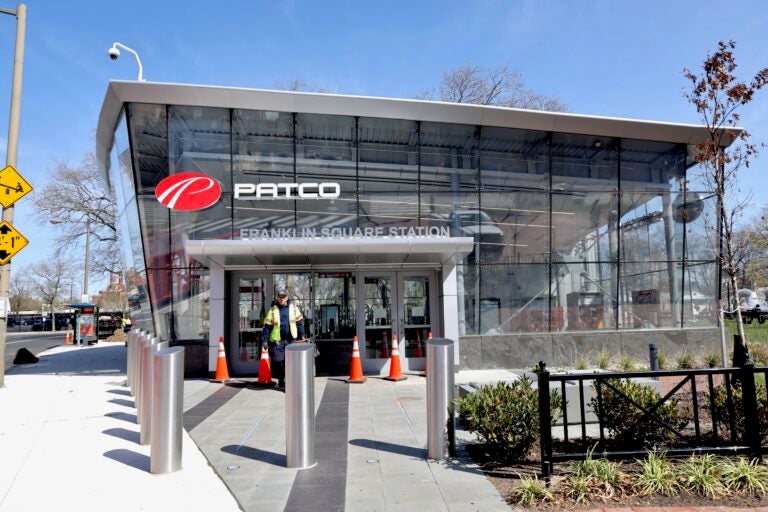
The Franklin Square PATCO station reopens April 3 for the first time since 1979, bringing the number of stops on the line to 14. (Emma Lee/WHYY)
From Philly and the Pa. suburbs to South Jersey and Delaware, what would you like WHYY News to cover? Let us know!
For 46 years, the PATCO train station underneath Franklin Square park in Philadelphia has been known as the “ghost station,” an eerily dark and dirty platform lit only by dim orange track lights that passengers coming to and from New Jersey watch as it zooms past the train window.
“People wanted us to make it a Halloween-type event,” said PATCO general manager John Rink. “Where we could scare people.”

Now the ghost has come back to life.
The newly renovated station costing $29.3 million reopens for regular service on Thursday afternoon, with the first train stopping heading westbound at 1:38 p.m., followed a few minutes later by the first eastbound train.
The station has a new, all-glass headhouse at 7th and Race streets, where passengers can buy tickets from a kiosk and go through turnstiles before descending to the below-ground platform. It has gone through extensive renovations to make it newly compliant with the Americans with Disabilities Act, including elevators, escalators and ramps where there had only been steps before.
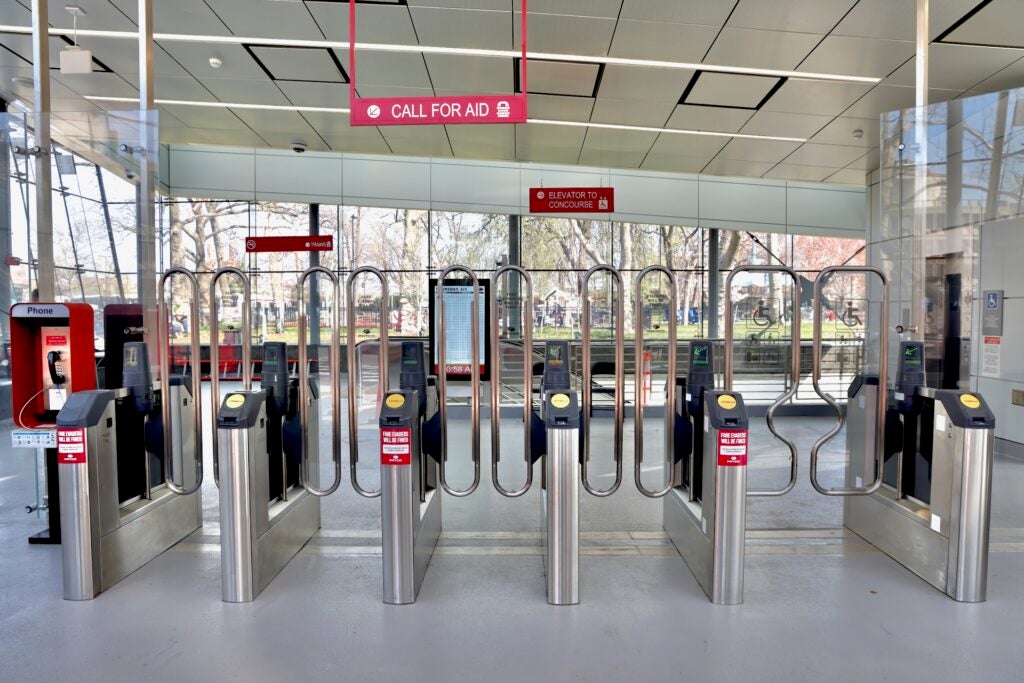
Franklin Square was one of the four original stations of what was then called the Bridge Line, a predecessor of the PATCO system. When it opened in 1936, the Bridge Line stopped at the Broadway and City Hall station in Camden, and Franklin Square and 8th Street in Philadelphia.
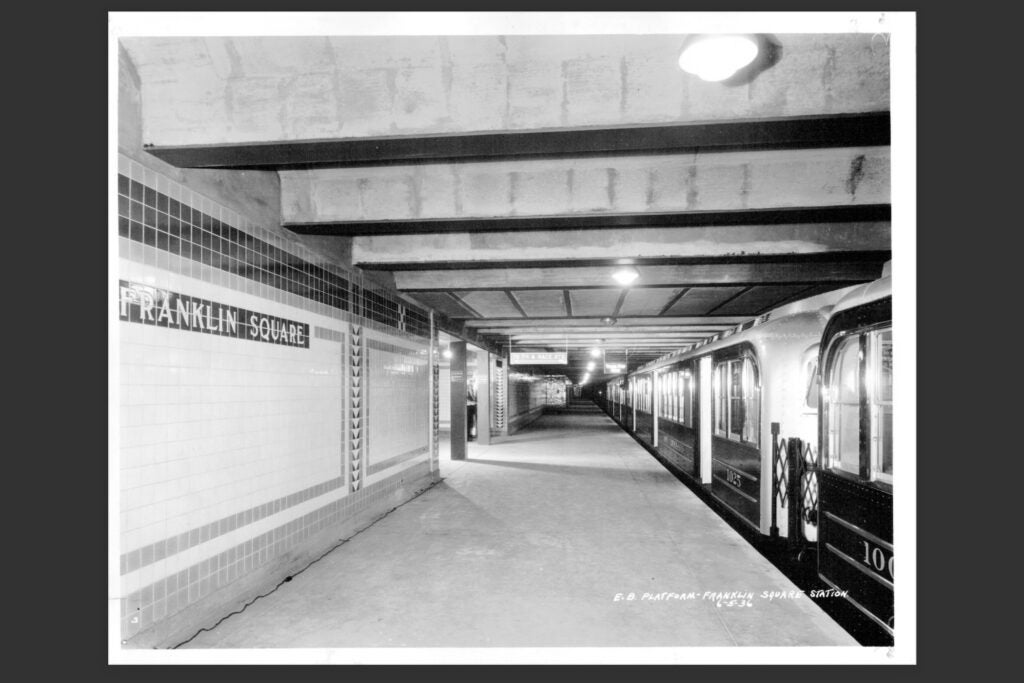
PATCO was formed by the Delaware River Port Authority in 1968. By then, the park and its surroundings were in decline, regarded as part of Philadelphia’s skid row. In 1979, PATCO shut down the Franklin Square station.
“Lack of ridership,” Rink said. “After the [1976] Bicentennial was over, there was really nothing around the park.”
Since then, the area has changed dramatically. New buildings have sprung up, including the National Constitution Center and several large apartment buildings. In 2005, Historic Philadelphia took over the maintenance and programming of Franklin Square, which now sees about 700,000 users a year. It is currently undergoing $7.8 million in renovations.
Rink estimates as many as 1,000 people might pass through Franklin Square station a day, but that estimate predates the COVID-19 pandemic, from which PATCO has yet to recover.
When PATCO first started planning to reopen Franklin Square about 15 years ago, Rink said that the idea was to encourage ridership between Philadelphia and Camden to the east. With the increased activity around Franklin Square, the intent now is to foster crosstown ridership to the west.
“A lot of residential development from Old City to Northern Liberties and now on Spring Garden Street,” Rink said. “We’ll only be $1.40 a single ride from here to the other side of the city, versus Uber and Lyft. We think we have a great opportunity to promote intercity travel.”
Franklin Square Station still has its original 1936 subway tile, with green borders and the name of the station spelled out in green. The tiles are remarkably intact with hardly any sign of the passage 89 years. Of the other 13 stations in the PATCO system, only Camden City Hall and 8th Street stations have antique tile.
For a brief period in the life of Franklin Station it had a funky 1970s vibe with orange accents. Those did not survive the renovations. Newly constructed sections for offices and building mechanical systems have been finished in contemporary bright-white tile.

In all other ways the station is modern. The concrete floors have a high-traffic epoxy coating, the yellow safety strip at the edge of the 700-foot long platform is flush to the floor, the digital signs above the platform carry real-time train arrivals information, USB charging outlets and overheads speakers have been placed every 40 feet, which allows clearer aural announcements that don’t have to be pitched loudly to be heard.
Above ground in the ticketing headhouse, the glass walls are pocked with small divots to discourage birds from crashing into them, its living green roof controls stormwater runoff and there is a small rack for temporarily locking bicycles out of the rain.
In a statement, PATCO said the additional stop will not impact travel times system-wide. New maps and schedules that include Franklin Square have been installed in all PATCO stations, which show train departure times at all stations are unchanged.
WHYY is your source for fact-based, in-depth journalism and information. As a nonprofit organization, we rely on financial support from readers like you. Please give today.



